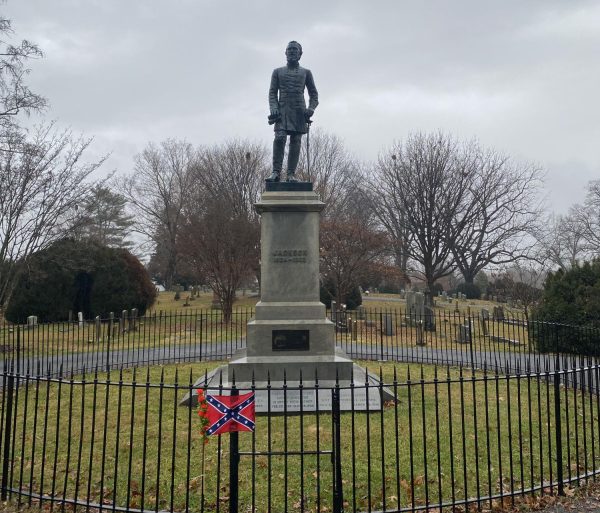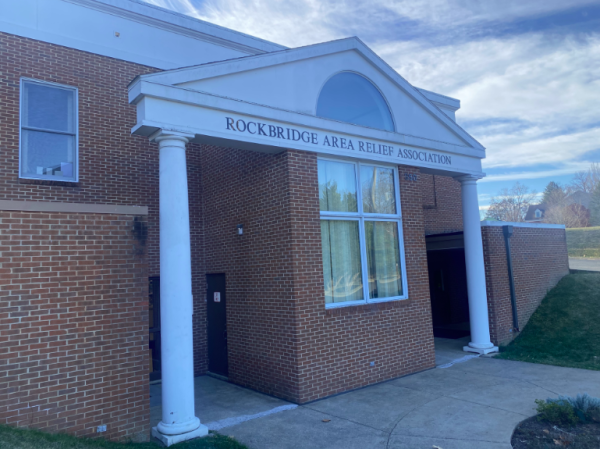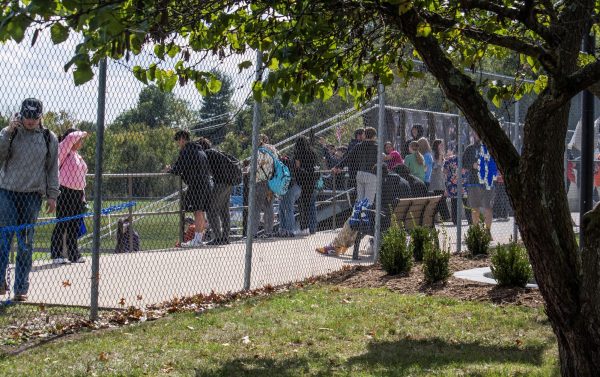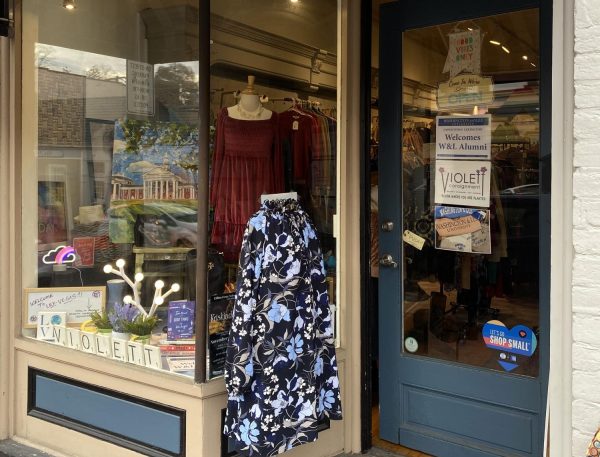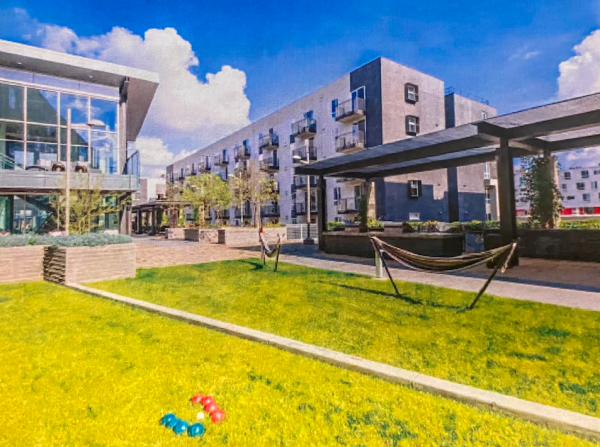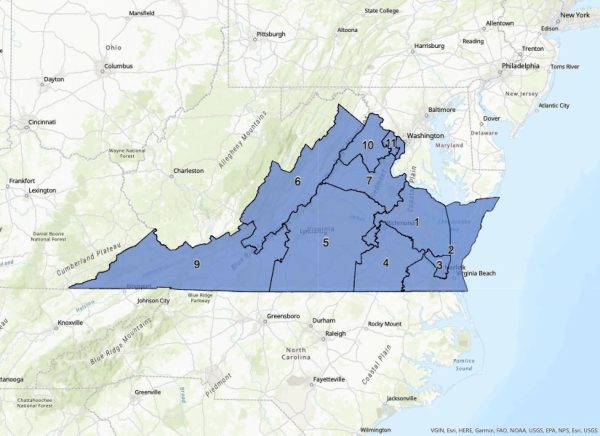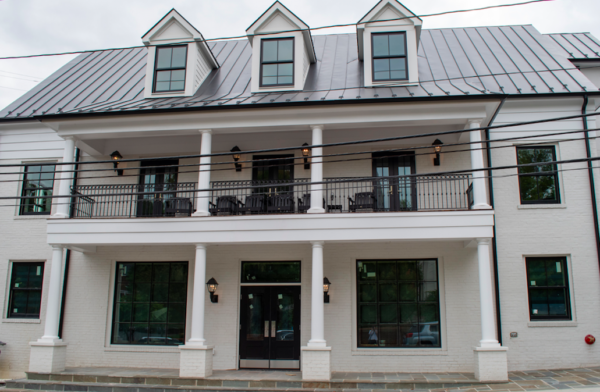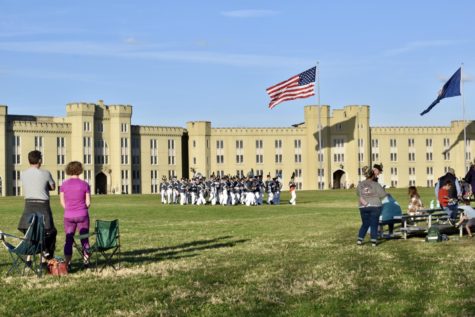County further delays solar proposal decision
The county planning commission will decide on a controversial solar proposal in June, amid resident opposition
May 17, 2022
A proposal for a solar project in Rockbridge County went before the planning commission for the second time at its meeting May 11. The proposal was met with strong opposition from residents of the county before the commission decided to revisit it at the June meeting.
The commission had already delayed making a decision on this proposal once, at the meeting in April.
The solar farm, called a “shared solar project,” is proposed for a parcel of agricultural land on Mackeys Lane in Rockbridge. Because solar projects normally belong on industrial or commercial land, the commission is considering a special zoning exception.
CVE North America, Inc., an independent power producer headquartered in France, is the applicant for this special exception. Carson Weinand, senior business developer for CVE, represented the company at the meeting.
The project would encompass 25 acres of a 95-acre parcel owned by Troy Plott. To install the panels, CVE would have to build a temporary gravel access road from Mackeys Lane to the site and extend an existing single-phase power line 0.1 miles to get to the site.
A single-phase connection allows energy to flow through a single conductor, whereas a three-phase power line needs three conductors.
The environmental benefits of this project would be significant, Weinand said.
“This is why it got passed in the first place at a state level,” he said at the April meeting. “The amount of clean energy that will be placed on the grid, displacing brown energy, is equivalent to avoiding over 13 million pounds of carbon dioxide per year.”
Around 900 homes will benefit from this power generation, according to the plan that CVE presented to the county. And that’s what makes a shared solar program different from a utility-scale solar farm.
Shared solar programs, sometimes called “community solar programs,” are owned in shares or leased by those in the area they serve, rather than being owned by a utility.
“We generate renewable energy back into Dominion,” Weinand said. “Dominion gives us credits for all the energy that we generate.”
Under the program, customers can buy subscriptions to the shared solar facility to receive utility bill deductions.
“Customers that purchase a subscription will receive a bill credit for the proportional output of the shared solar facility attributable to that subscriber,” according to the Dominion website page about shared solar programs.
“If somebody has a $100 electric bill, we can allocate them $100 worth of credits,” Weinand said. “Then they, in turn, have a separate bill with CVE, and they pay us $90 for those credits. So they just turned their $100 bill into a $90 bill, and we got $100 of revenue.”
Capacity is awarded on a first-come first-served basis, according to the Dominion website, and interested residents will be placed on a waitlist if capacity is full.
But there’s a catch.
The residents who live near the Mackeys Lane parcel are customers of BARC Electric Cooperative. But this project is affiliated with Dominion, so only Dominion customers can reap the benefits of the shared solar by subscribing to this program.
“In recognition of the spirit of the shared solar program, we welcome the opportunity to discuss alternatives to offer substitute credit savings to these neighbors that would be comparable to the subscribers for Dominion,” Weinand said in April.
He also mentioned that BARC has a shared solar project in Rockbridge County, and “these neighbors have the opportunity to participate in shared solar through that project. Unfortunately, not through this project.”
But neighbors are so opposed to this project that a utility bill deduction still wouldn’t convince them to support it, said several Rockbridge residents during the public hearing portion of the April meeting.
Chad and Melissa Mayr of Donaldsburg Lane wrote a letter to the planning commission, which Chris Slaydon, director of the county’s office of community development, read aloud during the April meeting.
“We receive little to no benefit from this project,” the Mayrs wrote. “To be frank, even if we did receive a measly discount on utility bills, it would not make this project acceptable.”
Every speaker during the public hearing portion of both the April and May meetings was a resident of Rockbridge, and each of them opposed the project.
The primary concerns of residents are the visual impact of the panels and the potential drop in their property values from living near a solar farm. But residents are also concerned with construction noise and traffic, the stormwater retention pond that will need to be built, and the loss of agricultural land in the county.
“We purchased our home because of the lovely countryside, there is no sin in wanting to live in the midst of a beautiful setting,” said Tom Kirby, a resident of Donaldsburg Lane, at the May meeting. “At no time did we request that a solar array with thousands of panels be installed on our rolling hills.”
Kirby and his wife, Erma, live in the Donaldsburg community, which overlooks the proposed parcel. They would be able to see the panels from their house, which is right down the street from their daughter Jennifer Carlucci, and her husband Nick.
To combat the visual impacts, CVE plans to place a line of trees to block the solar panels from the view of neighbors.
But these trees will take 10 to 15 years to grow to their full height. This is most of the useful life of the project, which is 25 to 35 years.
Kirby brought a real estate magazine with him to the meeting to illustrate his point.
“Nowhere could I find a property in here that was listed as being nestled near a solar array with many thousands of panels, steelworks, new roads and power lines,” he said. “Instead, what I found was numerous ads beginning with the words, magnificent rural setting, gorgeous views, spectacular sunsets.”
Patricia Thomas, who bought land in Donaldsburg Lane in 2018 and started building a house in 2021, also spoke. She said that she and her husband experienced numerous building setbacks due to the pandemic, but continued the process because they were in love with the area.
The Thomas’ were “absolutely heartbroken” when they heard about the solar proposal, Patricia Thomas said.
“The stunning landscape of Rockbridge County has attracted countless residents who have invested not only in their money, but their lives in this community,” she said. “Allowing solar power plants to string up across Rockbridge will permanently change its character and eliminate its allure for people like us.”
Many residents emphasized that they aren’t anti-solar. But they said they don’t believe this is the right location for a solar project.
“Context is very important,” said Philip Bailey, Mackeys Lane resident. “When you take a shower, you go in the privacy of your own bathroom. However, you do not take a shower standing on downtown Main Street.”
Bailey said that this project in this location would make no sense because it would be out of context.
Resident opinion hasn’t changed since the April meeting, though parts of the CVE site plan have.
Weinand shared these updates, as well as other supplemental information from CVE, following recommendations from the commission in April.
The commission especially wanted to know more about the construction and decommissioning of the panels, and see additional visual simulations of what the project would look like.
Some of these new details included the number of trucks that would be driving on the narrow road during the six-month building period.
During the first month, CVE estimates between 24 and 48 heavy vehicles traveling on Mackeys Lane. For the second, third, fourth and fifth months of construction, this estimate jumps to between 80 and 120 vehicles, before dropping back down to four vehicles during the final month.
This was a particular concern for Planning Commission Member Melissa Hennis.
“That’s not solved by [landscape] screening,” Hennis said at the May meeting. “To me, that’s just too much traffic on that road.”
Hennis also said she didn’t see the benefit of this project on Rockbridge County, and her comments were met with applause from residents.
Planning commission members were also concerned about the decommissioning plan. Weinand said CVE would try first to donate or recycle the panels, but they could end up in the landfill.
The company set around a $150,000 budget for this decommissioning process. Several planning commission members said they thought this number was too low.
But at the end of the meeting, members decided to take the rest of their 60-day time limit for action, and delay this verdict until the June meeting.
At that meeting, the commission can either recommend a special zoning exception to allow the solar farm on agricultural land, sending it to the county board of supervisors, or deny it, killing the proposal.
There will be no public hearing portion of the meeting in June, though Rockbridge residents have certainly made their position on this issue clear.



